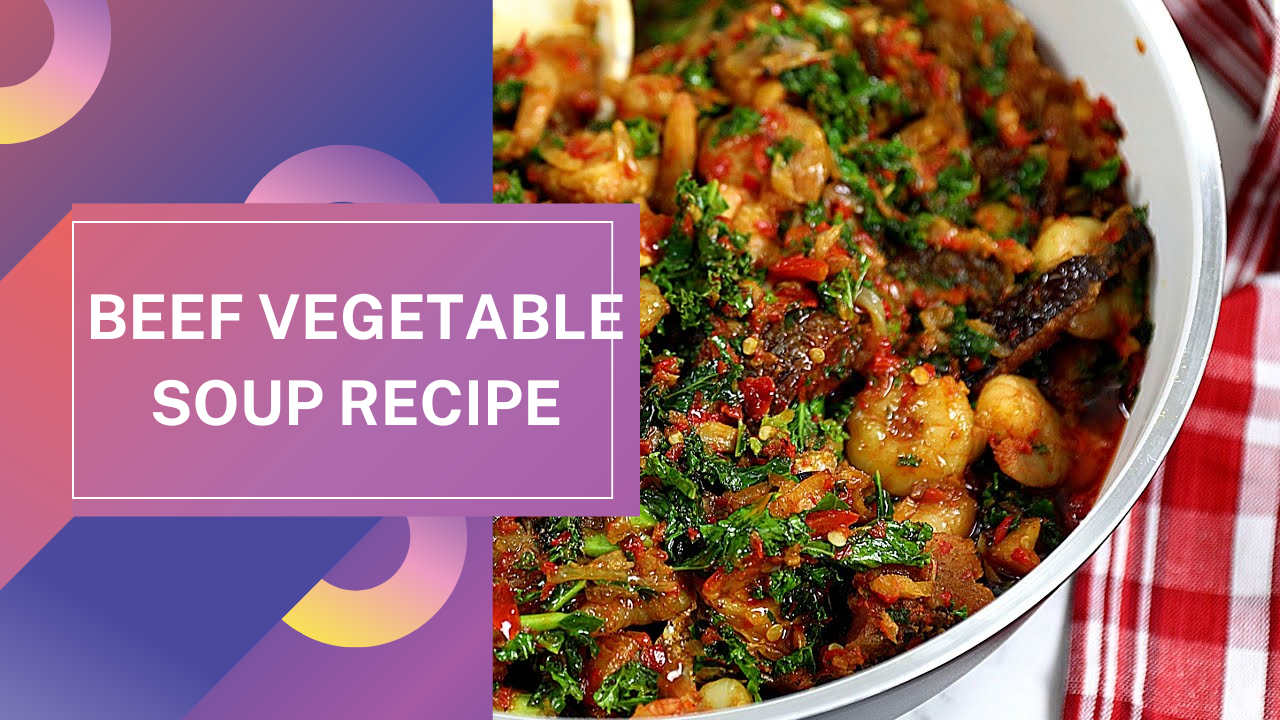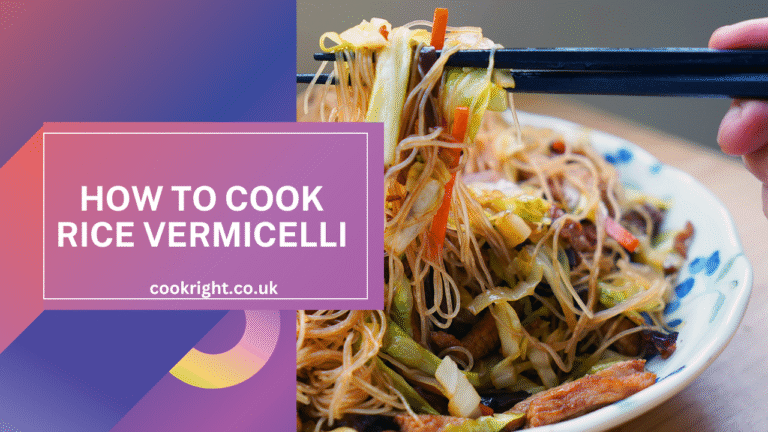There’s something truly comforting about a bowl of homemade vegetable soup. It’s warming, nourishing, and full of flavor. Whether you’re seeking comfort on a chilly day or simply looking for a healthy, wholesome meal, vegetable soup is always a great option. It’s also a versatile dish that allows you to get creative with ingredients, depending on what’s in season or what you have on hand. In this blog post, we’ll take you step by step through the process of making a delicious and hearty vegetable soup that’s perfect for any occasion.
Why Make Vegetable Soup?
Before we dive into the recipe, let’s talk about the reasons why vegetable soup should be a staple in your kitchen:
- Nutrient-Dense: Vegetable soup is packed with vitamins, minerals, and antioxidants from a variety of vegetables. It’s an excellent way to incorporate a diverse range of nutrients into your diet.
- Low-Calorie: Unlike cream-based soups, vegetable soup is generally low in calories and fat, making it a great choice for those looking to maintain or lose weight.
- Budget-Friendly: Vegetable soup can be made with inexpensive, readily available ingredients, making it a cost-effective meal option.
- Customizable: The beauty of vegetable soup is that it’s easily adaptable. You can add your favorite vegetables, herbs, and spices or adjust the recipe to fit any dietary preferences, such as vegan, vegetarian, or gluten-free.
Now, let’s get started with the recipe.
Ingredients for Vegetable Soup
This recipe serves 6-8 people and can be easily halved if needed. Here’s what you’ll need:
Vegetables:
- 1 large onion, diced
- 3 cloves garlic, minced
- 2 carrots, peeled and chopped
- 2 stalks of celery, chopped
- 1 zucchini, diced
- 2 potatoes, peeled and cubed (Yukon Gold or Russet work well)
- 1 cup green beans, chopped
- 1 can (14.5 oz) diced tomatoes or 4 fresh tomatoes, chopped
- 1 cup frozen peas or corn (optional)
- 2 cups leafy greens (such as spinach, kale, or Swiss chard)
Broth and Seasoning:
- 6 cups vegetable broth (store-bought or homemade)
- 2 tablespoons olive oil
- 1 bay leaf
- 1 teaspoon dried thyme
- 1 teaspoon dried oregano
- 1 teaspoon paprika (optional, for added depth)
- Salt and pepper to taste
Optional Add-Ins:
- 1 cup cooked beans (such as kidney beans, cannellini beans, or chickpeas) for added protein
- 1 tablespoon lemon juice or apple cider vinegar to brighten the flavors
- Fresh parsley or cilantro for garnish
Step-by-Step Instructions
1. Prepare Your Ingredients
Before you start cooking, it’s important to get all your vegetables prepped. Dice the onion, mince the garlic, and chop the carrots, celery, zucchini, and potatoes into bite-sized pieces. If you’re using fresh tomatoes instead of canned, make sure they are chopped finely. Having all your ingredients ready to go will make the cooking process smoother.
2. Sauté the Aromatics
In a large pot, heat the olive oil over medium heat. Add the diced onions and sauté for about 5-6 minutes, until they are soft and translucent. Stir occasionally to prevent them from burning. Once the onions are softened, add the minced garlic and cook for an additional minute, until fragrant.
This step is crucial because the onion and garlic serve as the foundation for the soup’s flavor. Cooking them properly at the beginning will enhance the depth of your soup.
3. Add Vegetables and Herbs
Next, toss in the chopped carrots, celery, and potatoes. These are the heartier vegetables that take longer to cook. Stir them around for about 3-4 minutes to allow them to absorb some of the flavors from the onion and garlic.
At this point, add the dried thyme, oregano, bay leaf, and paprika (if using). The dried herbs will have time to release their flavors as the soup simmers, infusing it with an aromatic and earthy taste.
4. Add the Broth and Tomatoes
Pour in the vegetable broth and add the diced tomatoes (canned or fresh). Stir everything together, making sure all the vegetables are submerged in the broth. Increase the heat to bring the soup to a boil, then reduce it to a simmer.
Simmer the soup, uncovered, for about 20-25 minutes, or until the potatoes and carrots are tender. Stir occasionally to make sure nothing sticks to the bottom of the pot.
Pro Tip: If you like a thicker soup, you can mash some of the potatoes against the side of the pot with a spoon. This will break them down and thicken the broth without adding any extra ingredients.
5. Add Quick-Cooking Vegetables
Once the heartier vegetables are almost fully cooked, it’s time to add the quicker-cooking ingredients like zucchini, green beans, peas, or corn. These vegetables don’t need as long to cook, so adding them later ensures they don’t become mushy.
Let the soup simmer for another 10 minutes, or until all the vegetables are tender and cooked through.
6. Adjust Seasoning and Add Greens
At this point, taste the soup and adjust the seasoning. Add salt and pepper to taste. If you’re using beans, stir them in now to heat through. If you prefer a touch of acidity, add a tablespoon of lemon juice or apple cider vinegar to brighten the flavors.
Next, stir in your leafy greens. Spinach, kale, or Swiss chard are great choices, and they only need a couple of minutes to wilt down into the soup.
7. Serve and Garnish
Your vegetable soup is now ready to be served! Ladle it into bowls and garnish with freshly chopped parsley or cilantro for an added burst of freshness. If you’re feeling indulgent, a sprinkle of grated Parmesan or a drizzle of olive oil on top can add richness to the soup.
Tips and Tricks for the Best Vegetable Soup
- Use Seasonal Vegetables: To get the freshest and most flavorful ingredients, try to use vegetables that are in season. In the summer, zucchini and green beans are excellent, while root vegetables like carrots and potatoes shine in the winter.
- Don’t Overcook: Be mindful of the cooking times for each vegetable. Overcooking can lead to mushy vegetables and a less appetizing texture.
- Make It Ahead: Vegetable soup tastes even better the next day as the flavors have more time to meld together. Feel free to make a large batch and enjoy it over several days.
- Freeze for Later: This soup freezes beautifully! Once cooled, transfer it into freezer-safe containers or bags, and freeze for up to 3 months. To reheat, simply thaw and warm on the stove.
- Add Grains or Pasta: If you’re looking to make the soup heartier, you can add grains like quinoa, barley, or farro, or toss in some small pasta shapes like elbow macaroni or orzo. Cook the grains or pasta separately and add them to the soup just before serving to avoid them soaking up too much liquid and becoming soggy.
Variations on Vegetable Soup
1. Spicy Vegetable Soup
For those who like a little heat, try adding ½ teaspoon of red pepper flakes or a chopped jalapeño when sautéing the onion and garlic. You can also stir in a spoonful of harissa or sriracha for a spicy kick.
2. Creamy Vegetable Soup
If you prefer a creamy soup, blend half of the soup in a blender and return it to the pot. Alternatively, stir in a cup of coconut milk or cream at the end of cooking for a rich, velvety texture.
3. Mediterranean-Inspired Vegetable Soup
Add Mediterranean flavors by stirring in a tablespoon of tomato paste along with the tomatoes and broth. Add a pinch of saffron or a teaspoon of ground cumin and coriander for depth, and finish the soup with a handful of chopped olives and a drizzle of olive oil.
Final Thoughts
There’s no right or wrong way to make vegetable soup – it’s all about using ingredients you love and creating a flavor profile that satisfies your taste buds. Whether you’re looking for a light starter, a hearty main course, or a wholesome meal prep option, vegetable soup can fit the bill. It’s a timeless dish that’s both comforting and nutritious, and with the tips and recipe outlined above, you’ll be well on your way to creating the perfect pot of soup.
Happy cooking!




